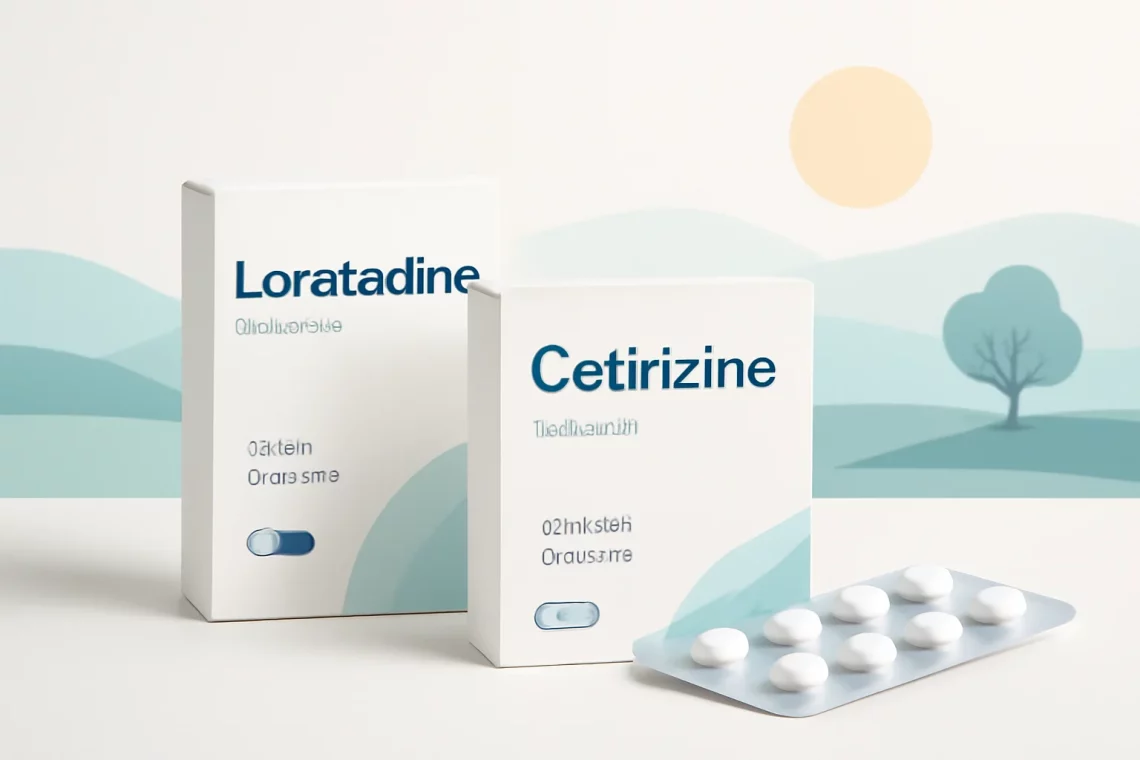
Loratadine vs Cetirizine: Which Allergy Medication Is Right for You?
Allergies can be a nuisance, affecting millions of people worldwide. Seasonal changes, pet dander, dust mites, and various environmental factors can trigger allergic reactions, leading to symptoms such as sneezing, itching, and nasal congestion. As the demand for relief from these symptoms grows, many individuals turn to over-the-counter antihistamines. Two of the most popular options are Loratadine and Cetirizine. Both medications belong to the class of second-generation antihistamines and are commonly used to alleviate allergy symptoms. However, despite their similar purposes, they have distinct differences in their effectiveness, side effects, and usage guidelines. Understanding these differences can help individuals make informed choices about which medication may be more suitable for their specific needs. This article delves into the characteristics, benefits, and drawbacks of Loratadine and Cetirizine, providing clarity for those seeking relief from allergy symptoms.
Loratadine: An Overview
Loratadine is a non-sedating antihistamine primarily used to treat allergic rhinitis and urticaria. It works by blocking the action of histamine, a substance in the body that causes allergic symptoms. Since its introduction, Loratadine has gained popularity due to its effectiveness and minimal sedative effects compared to first-generation antihistamines.
One of the key advantages of Loratadine is its long-lasting effect. Typically, a single dose can provide relief for up to 24 hours, making it a convenient choice for individuals who prefer not to take medication multiple times a day. This extended duration of action allows users to manage their symptoms effectively, especially during peak allergy seasons when exposure to allergens is heightened.
Loratadine is available in various forms, including tablets, liquid formulations, and dissolvable strips. This variety ensures that users can select the form that best suits their preferences and needs. Additionally, Loratadine is generally well-tolerated, with few common side effects. While some individuals may experience headaches, fatigue, or dry mouth, these adverse effects are typically mild compared to those associated with first-generation antihistamines.
It is important to note that Loratadine may take longer to onset its effects compared to Cetirizine. Users may need to wait a few hours before experiencing significant relief from their symptoms. This factor can be crucial for those who require immediate relief, particularly during acute allergy episodes. However, for most users, the benefits of Loratadine, including its non-sedating profile and long-lasting effects, make it a popular choice for managing allergy symptoms.
Cetirizine: An Overview
Cetirizine is another second-generation antihistamine that is widely used to treat allergic reactions, including hay fever and hives. Like Loratadine, it works by blocking histamine receptors, thereby reducing allergy symptoms. However, Cetirizine has a slightly different pharmacological profile, which can influence its efficacy and side effects.
One of the main characteristics of Cetirizine is its rapid onset of action. Many users report feeling relief within an hour of taking the medication, making it an excellent choice for those who need quick relief from allergy symptoms. This rapid action can be particularly beneficial during peak exposure to allergens, when immediate symptom management is crucial.
While Cetirizine is effective in reducing allergy symptoms, it is important to note that it may cause sedation in some individuals. Although it is considered a non-sedating antihistamine, some users may still experience drowsiness or fatigue after taking Cetirizine. This side effect can be a significant factor for those who need to remain alert, such as individuals driving or operating heavy machinery.
In terms of duration of action, Cetirizine generally provides relief for about 24 hours as well. However, its sedative properties can be a double-edged sword, as some users may find it easier to sleep after taking the medication. This aspect can be advantageous for individuals who suffer from allergies that disrupt sleep, but it could also be a drawback for those who need to maintain high levels of alertness during the day.
Cetirizine is available in various forms, including tablets, liquid solutions, and dissolvable formats. This range of options makes it accessible for users of all ages, including children. However, it is essential for parents to consult with a healthcare professional to determine the appropriate dosage for their children.
Comparing Loratadine and Cetirizine
When it comes to choosing between Loratadine and Cetirizine, several factors should be considered, including efficacy, side effects, and individual preferences. Both medications are effective in treating allergy symptoms, but they have distinct advantages and disadvantages that may influence a person’s decision.
Efficacy is a significant consideration when comparing the two. Both Loratadine and Cetirizine are effective for managing symptoms associated with allergic rhinitis and urticaria. However, Cetirizine’s faster onset may be preferable for those who require immediate relief. On the other hand, Loratadine’s longer duration of action may suit individuals who prefer a medication that provides consistent relief throughout the day.
Side effects are another critical factor to consider. Loratadine is generally well-tolerated, with a lower incidence of sedation. This quality makes it a suitable option for people who need to maintain focus and alertness. In contrast, while many people tolerate Cetirizine well, some may experience drowsiness, which could impact daily activities.
Ultimately, the choice between Loratadine and Cetirizine may also depend on individual health conditions and lifestyle factors. For someone who experiences frequent allergy symptoms but also needs to drive or work in a focused environment, Loratadine may be a better fit. Conversely, someone who can afford to experience some drowsiness and needs quick relief may prefer Cetirizine.
It is always advisable to consult with a healthcare professional when choosing an antihistamine, as they can provide personalized recommendations based on medical history and specific allergy triggers.
Conclusion
In conclusion, both Loratadine and Cetirizine are effective second-generation antihistamines that can provide relief from allergy symptoms. Each medication has its unique characteristics, and the choice between the two may depend on various factors, including the need for rapid relief, tolerance to sedation, and personal preference.
It is essential to approach allergy management with a well-informed perspective, considering both medications’ benefits and drawbacks. By understanding the differences between Loratadine and Cetirizine, individuals can make informed decisions that best suit their needs and improve their quality of life.
**Disclaimer:** This article is for informational purposes only and should not be considered medical advice. For any health-related concerns or questions, it is essential to consult a qualified healthcare professional.




